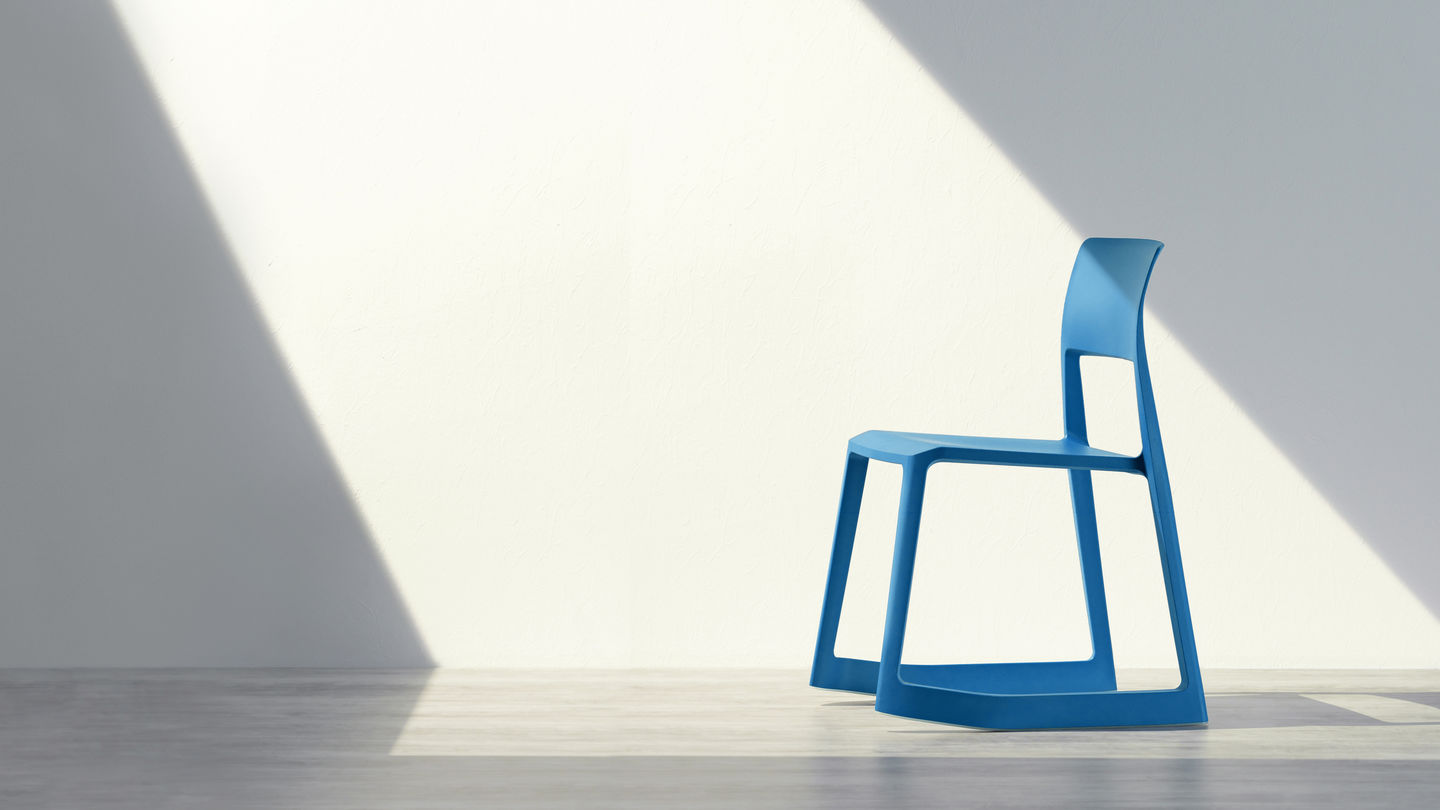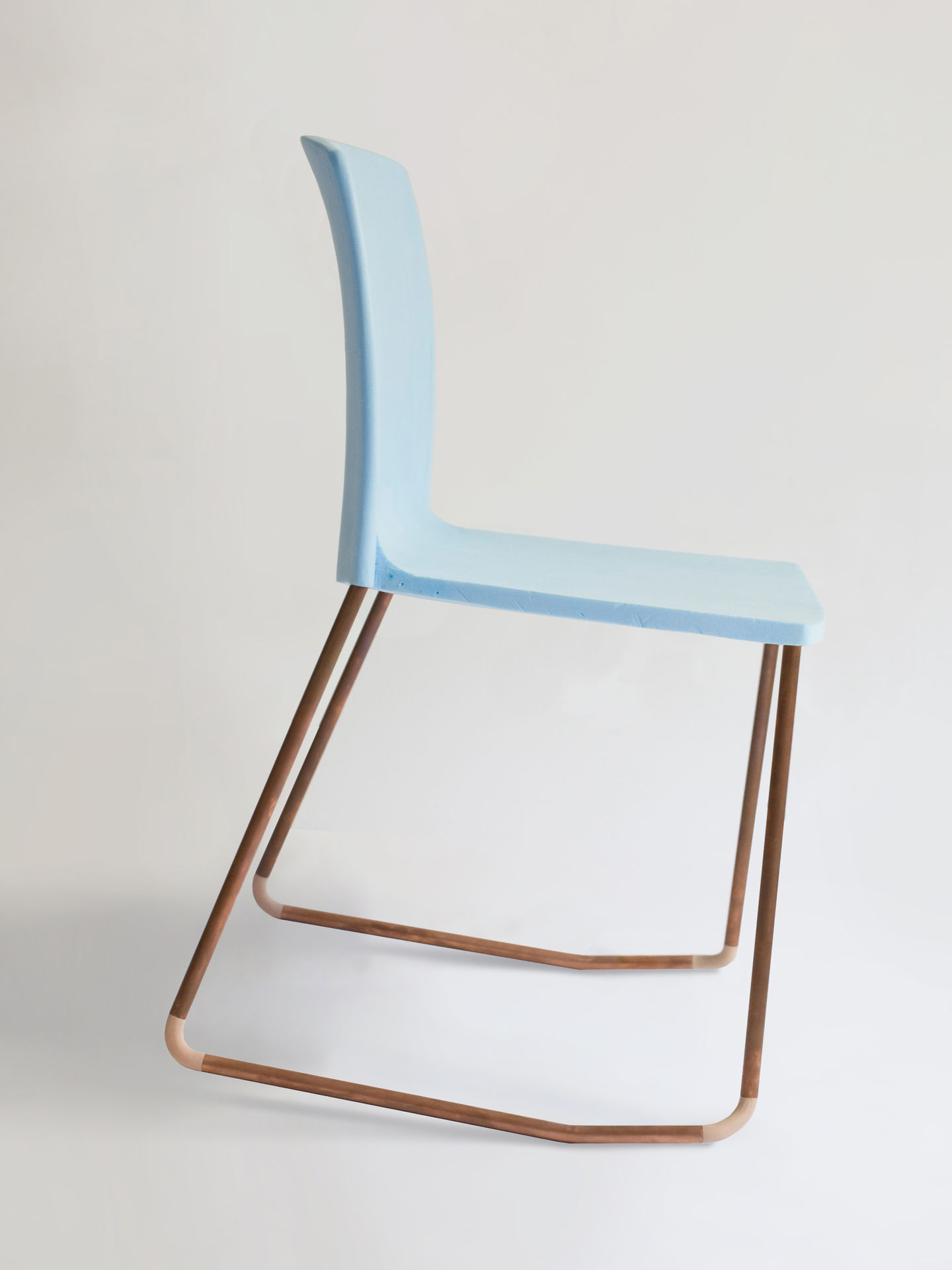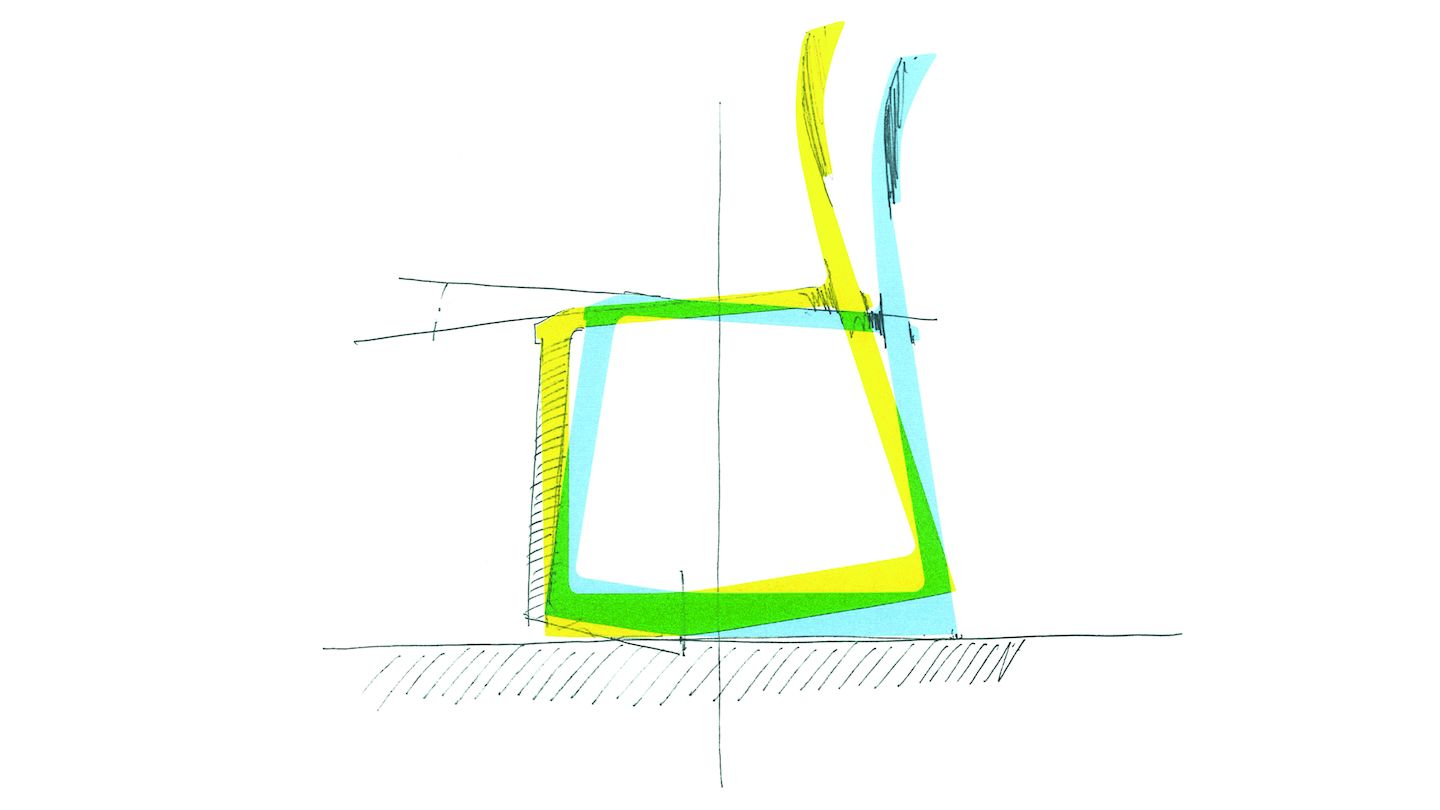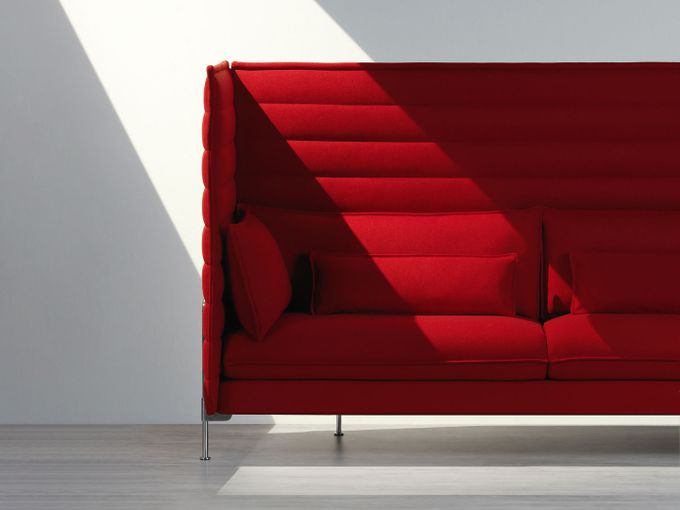When designers can’t sit still.
Tip Ton
The Story of a Vitra Original

In 2008 the Royal Society for the Encouragement of Arts, Manufactures and Commerce asked the British design duo Edward Barber and Jay Osgerby to develop a concept for furnishing the new Royal Society of Arts Academy in Tipton. They combined their planning efforts with a search for suitable furniture – and discovered a gap in the market for school chairs compatible with 21st-century learning methods: the Polyprop Chair by Robin Day from 1963 was the last groundbreaking chair to find its way into schools – and it had not even been developed for this purpose. Subsequent innovations were limited to the pursuit of ever-cheaper models. The fact that these were nearly all based on outdated pedagogical concepts – static teaching to forward-facing pupils who were supposed to sit upright and listen in silence – was apparently secondary.
Barber and Osgerby embraced the challenge that this situation presented. They compiled a list of the ergonomic, economic and aesthetic characteristics that they felt should be incorporated in a modern school chair for young students: indestructible, light, easy to produce, quiet, stackable, colourful and fully recyclable. And it should allow movement. This complex brief called for a revolutionary chair – for a new way of sitting.
Barber and Osgerby embraced the challenge that this situation presented. They compiled a list of the ergonomic, economic and aesthetic characteristics that they felt should be incorporated in a modern school chair for young students: indestructible, light, easy to produce, quiet, stackable, colourful and fully recyclable. And it should allow movement. This complex brief called for a revolutionary chair – for a new way of sitting.
«a forward-tilt sitting position... promotes circulation»
Having already had some initial contact with Vitra – and knowing that the company was engaged in a research project with the Swiss Federal Institute of Technology (ETH Zurich) on ‘dynamic sitting’ in connection with office chairs – the designers saw the task as an ideal first joint project. The findings of the ETH study were clear: a forward-tilt sitting position helps prevent physical ailments and promotes circulation – and hence the ability to concentrate. Vitra’s interest in the Barber-Osgerby idea was just as evident, prompting the start of an intensive design process that would take over two years.


The initial premise was that the chair’s construction would encourage a variety of sitting positions and keep the body – and mind – active. This triggered countless technical drawings, numerous models made of artificial resin and a total of more than 30 prototypes. The first ten, which combined a shell with a metal base, served to resolve technical problems, eliminate mistakes and refine the stackability and tilt function – the chair should be able to tip forward in a controlled fashion, reaching a stable position for the user. In terms of shape, the first attempts were very different from the final product. Over time, a further 20 prototypes were produced, now in a version made entirely of plastic, and it became evident that this was the material that would fulfil all the necessary requirements. Without the complex technology of an office chair, a tilt function was achieved with a nine-degree angle at the front of the skids. As the chair was to be employed in educational environments, it had to pass a battery of rigorous tests to comply with the quality and safety standards in numerous countries – which entailed further adjustments to perfect the structural details.

The chair design was at last final. And the name ‘Tip Ton’ not only provides an onomatopoeic expression of the two seating positions, but also references the original project for the school in Tipton. The tooling used to manufacture Tip Ton from injectionmoulded polypropylene weighs more than 20 tonnes – the chair just 4.5 kilogrammes. During the development process, it became increasingly clear to Vitra and to Edward Barber and Jay Osgerby that the chair was more than just a school chair. The design and the ‘dual’ sitting experience are so natural and intuitive that it can also be used in office environments and private living spaces – as a universal seating solution.
«Learning is challenging, engaging, purposeful and innovative...»
Even if the development of Tip Ton took too long for the chair to be used at the Royal Society of Arts Academy in Tipton as originally intended, the educational institution’s vision statement exemplifies the process with which Vitra applies the power of good design: ‘Learning is challenging, engaging, purposeful and innovative allowing for creativity, a sense of fulfilment and a desire to succeed.’
Publication Date: 25.05.2017
Images: Edward Barber & Jay Osgerby, Bettina Matthiessen


